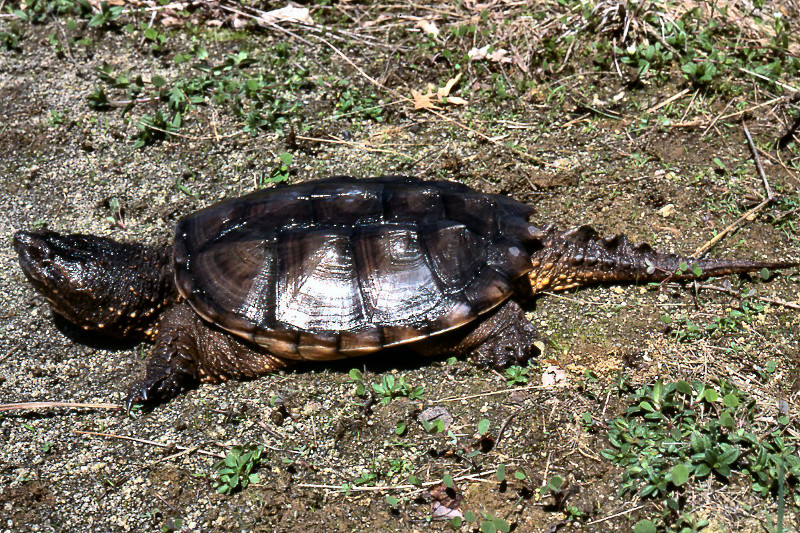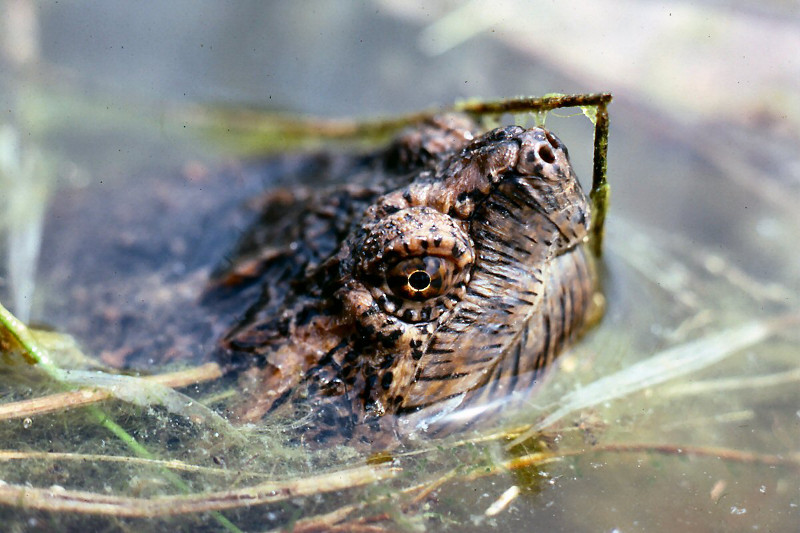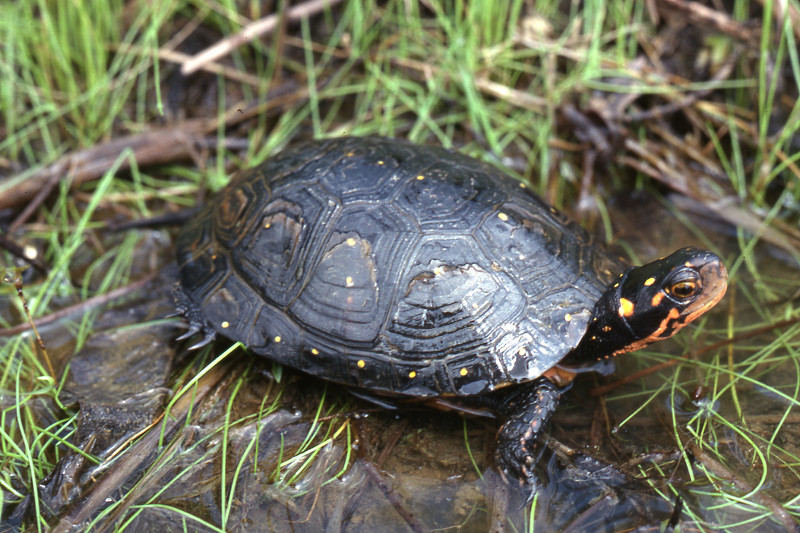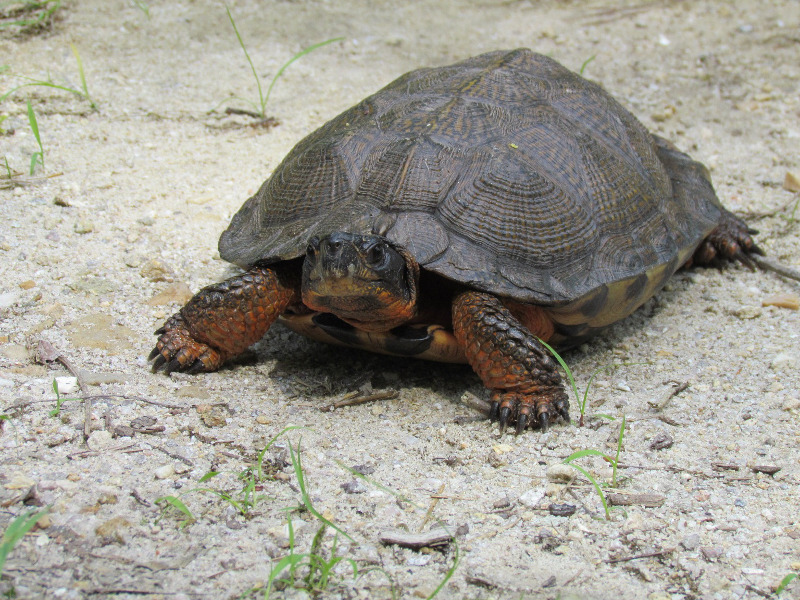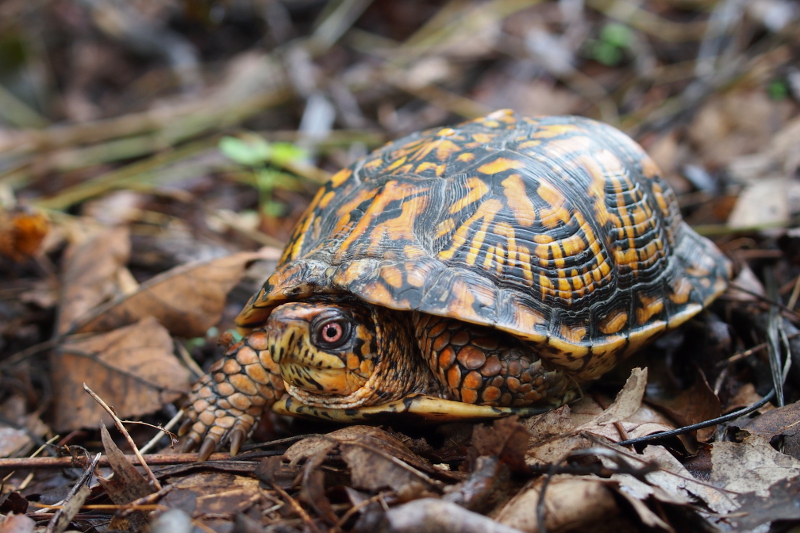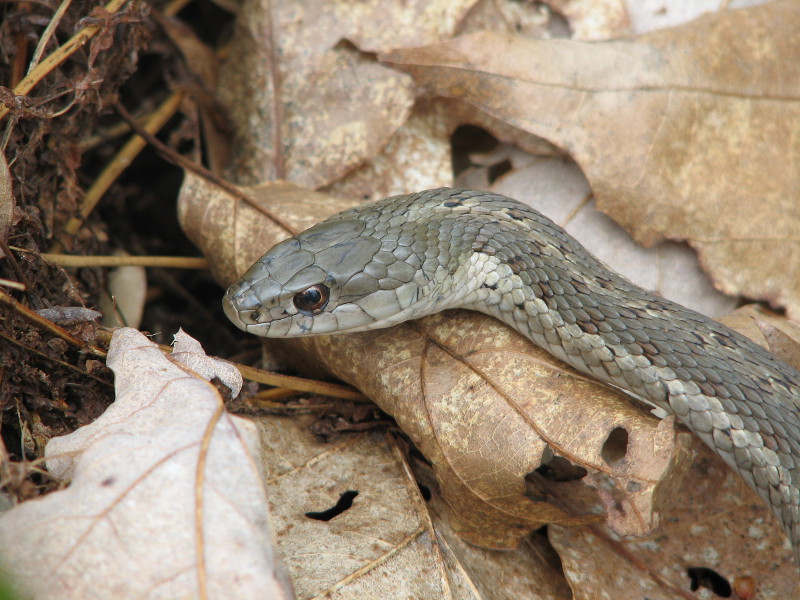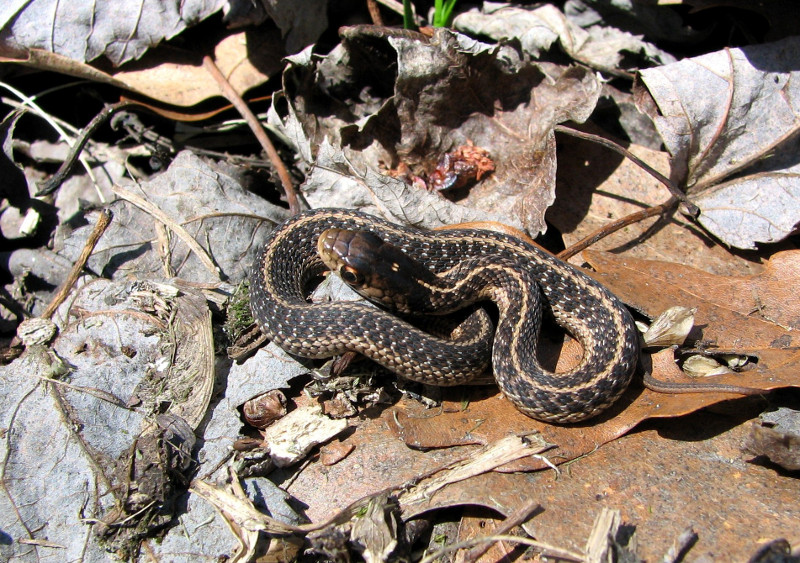 Vernal Pool Reptiles
Vernal Pool Reptiles
Snapping Turtles (Chelydridae)
Snapping Turtle (Chelydra serpentina) - FACULTATIVE
This is the largest of Pennsylvania's turtles. Carapace length may reach 12 inches. It is a
top level carnivore and usually lies in wait for unsuspecting prey. While usually found in
permanent bodies of water, they too will take advantage of a food source when they encounter
it in occasional forays from a larger body of water.
Water Turtles and Box Turtles (Emydidae)
Painted Turtle (Chrysemys picta) - FACULTATIVE
The painted turtle is an aquatic species that prefers slow moving or still bodies
of water. The head and neck have yellow spots and red stripes. Adult turtles average 4 to 6 inches in length.
Painted turtles are often seen basking in the spring and fall. Like other reptiles, their body temperature tracks that of their surroundings. Many of their bodily processes are temperature dependant. The rate of digestion and egg and sperm development can be increased by raising their body temperature through basking.
Spotted Turtle (Clemmys guttata) - FACULTATIVE
This relatively small turtle averages 3 to 4 inches in length. The number and placement
of yellow spots on the shell is variable. The neck and head have yellow and orange markings.
It inhabits wet, marshy areas.
Wood Turtle (Glyptemys insculpta) - FACULTATIVE
The wood turtle is semi-aquatic. Depending on the time of year, they may be found either on
land or in the water. The carapace or upper shell of an adult averages 5 to 8 inches. The wood
turtle is rather unmistakable with bright orange skin on the neck and legs. The species name
"insculpta" refers to the sculptured appearance of the scales on the carapace.
Box Turtle (Terrapene carolina) - FACULTATIVE
The box turtle is the most terrestrial of Pennsylvania's turtles. They average 4 - to 5 inches in length.
The color and pattern of the markings on their shell are quite variable. During hot dry periods, the box
turtles will seek out cool wet areas in which to rest in order to regulate their body temperature.
Harmless Snakes (Colubridae)
Eastern Garter Snake (Thamnophis sirtalis) - FACULTATIVE
Garter snakes are among the first snakes
to emerge from their hibernaculum in the spring. They are semiaquatic. Adults may range in size from 18
to 26 inches. They have three stripes down the back. They are frequently found near water and feed on
earthworms, insects, and amphibians. Seasonal pools with thousands of tadpoles and salamander larvae
are a good food source for the garter snake.
Credits: Body lengths for all reptile species taken from Shaffer (1991).

